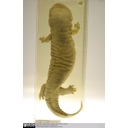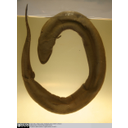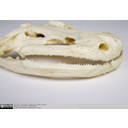Salamanders
Distribution and Habitat:
Salamanders are almost entirely confined to the holarctic - the
ecozone including the habitats of the northern continents, as well as a small
part of North Africa north of the
The majority of salamanders are restricted to North and
Conservation Status (IUCN):
Of the 552 species of salamander that are listed on the IUCN Red List, two
species - the Yunnan Lake newt, Cynops wolterstorffi, and Ainsworth's
salamander, Plethodon ainsworthi - are now considered extinct, after
not being recorded since between 1964 and 1979.
A further 58 species are listed as Data Deficient, meaning that current
population level data is either absent or insufficient to make species-level
assessments.
A huge 55% of the remaining species (270/492) are considered threatened with
extinction, with 92 species listed as Vulnerable, 101 Endangered, and 77 Critically
Endangered. The remaining species are at lower risk, either listed as Least
Concern (160) or Near Threatened(62).
Features:
- Elongate body, usually
with four short limbs and a laterally
flattened tail for swimming.
- Broad, flattened skull,
with large orbits.
- Bicuspid teeth on both
the upper and lower jaw.
- The rib-bearers (the
elements of the vertebrae that articulate
with the ribs) are bicipital (have two prongs).
Licensed under the Creative Commons Attribution Non-commercial Share Alike 3.0 License
'Vertebrate Diversity' has been released as an open educational resource (OER) on a Creative Commons 'Attribution Non-commercial Share Alike' license. This means that once downloaded, content can be modified and improved to complement a particular course. This requires, however, that improvements are recycled back into the OER community. All content present at the time of download must be accordingly credited and, in turn, novel content must be appropriately licensed. For more information, please refer to the license deed by clicking on the link above.



